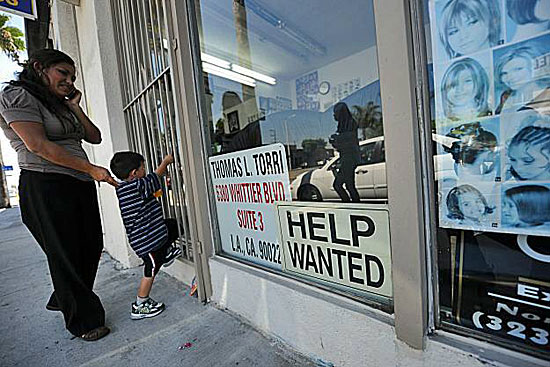County budget hints at a turnaround
April 17, 2012

The county's new budget shows signs the economy is turning around, as hiring and other indicators pick up.
When is a $75.8 million budget deficit good news?
When it comes after three straight years of far more severe gaps that ranged as high as $491.6 million.
After several years of navigating the most profound recession in recent memory, the proposed 2012-13 county budget unveiled this week suggests that in Los Angeles County, at least, the worst may be over.
The balanced $23.78 billion budget presented to the Board of Supervisors and the public this week “will result in no layoffs, no furloughs, no service cuts and no major reduction in anything that we do,” said County Chief Executive Officer William T Fujioka.
That’s in big contrast to the dire financial plight of many other local governments in California and elsewhere in the country.
“Particularly in a county with so many needs and so many people, it’s very, very impressive,” said Supervisor Gloria Molina.
Board of Supervisors Chairman Zev Yaroslavsky joined his colleagues in praising the county’s financial position relative to others, but cautioned that a lot can happen between now and September, when the final budget will be adopted.
“I do think that we have a lot of uncertainties out there. We got a little taste of one last week when the assessor revised his estimate on property tax revenues by a significant amount,” he said, noting that other issues loom on the state and federal levels, including a Supreme Court ruling on health care reform which could have “serious and significant” consequences here.
Fujioka’s release of the proposed spending plan is just the first step in a lengthy budget process that moves next to public hearings in May.
For now, at least, there is room for cautious optimism about where the economy is heading, Fujioka said, pointing to several encouraging signs.
The caseload for general relief, which the county provides to people with no other means of support, expanded dramatically in recent years as unemployment spiked, but is now decreasing and is expected to be 6.2% smaller in the coming budget year. That’s partly because of program changes moving qualified GR recipients to federal and state assistance, but also indicates that people may be starting to find work, Fujioka said.
“It shows that people are coming off GR, that they’re going back to work, hopefully, and that the economy in general is starting to grow,” Fujioka said.
That’s significant to the budget because funding for GR comes entirely from the county and the projected savings—$27.4 million—can be used to fund other needed programs.
Sales tax revenues also are expected to tick up by 3.4% in the coming year. And state vehicle license fees, which help fund programs in county departments including probation, are rising as well, although not as robustly as Fujioka would like.
“People are buying cheap cars,” he said, jokingly telling reporters who attended his budget unveiling Monday that “I want all your readers and those who are watching on TV to go buy more expensive cars. They can help the county out.”
Property tax revenues appear to be on the upswing, too—but with County Assessor John R. Noguez’s recent downscaling of his projections, the county could be facing an unanticipated $50 million shortfall. A board-ordered audit is underway but whatever its findings, Fujioka said, “I’m confident we can manage this.”
In addition to uncertainty over property tax projections and over upcoming state and federal developments, there’s also the continued issue of the county’s sagging investment earnings, which were $201 million in 2006-07 but are expected to be just $34.7 million in the fiscal year ahead. “That has gone down dramatically,” Fujioka said. “Huge change.”
On the positive side, efficiency initiatives are expected to save the county an estimated $255 million annually. Those include finding pharmaceutical drug savings of more than $100 million a year, getting rid of unused phone lines and installing smart irrigation systems in county parks.
While it has been able to avoid laying off any employees, the county has trimmed its workforce by 2,164 positions over the past five years. Department budgets have been cut by an average of 17%. “Yet you have not seen a 17% cut in the quality or even the manner in how we deliver services,” Fujioka said.
The new budget even calls for some modest hiring, including 157 sheriff’s positions and 56 new hires in the Department of Children and Family Services. And Fujioka said the county will be able to bridge what he termed the “absolutely manageable” budget gap of $75.8 million without dipping into the county’s Economic Reserve and Rainy Day funds.
Fujioka credited the county’s overall budget situation to a stable and fiscally disciplined Board of Supervisors, to county employees who have agreed to go without raises and cost of living adjustments during tough times, and to a willingness to confront budget realities head-on.
“We do not kick the can down the street,” he said. “We deal with our problems today.”
Posted 4/17/12












 405 bridge work causes a stink
405 bridge work causes a stink
